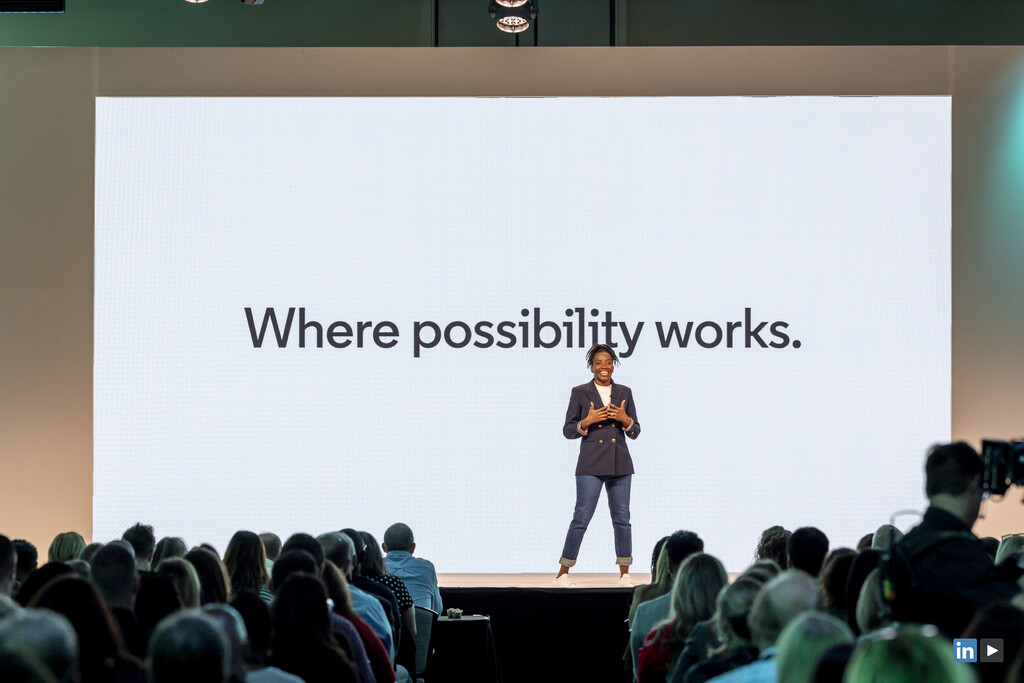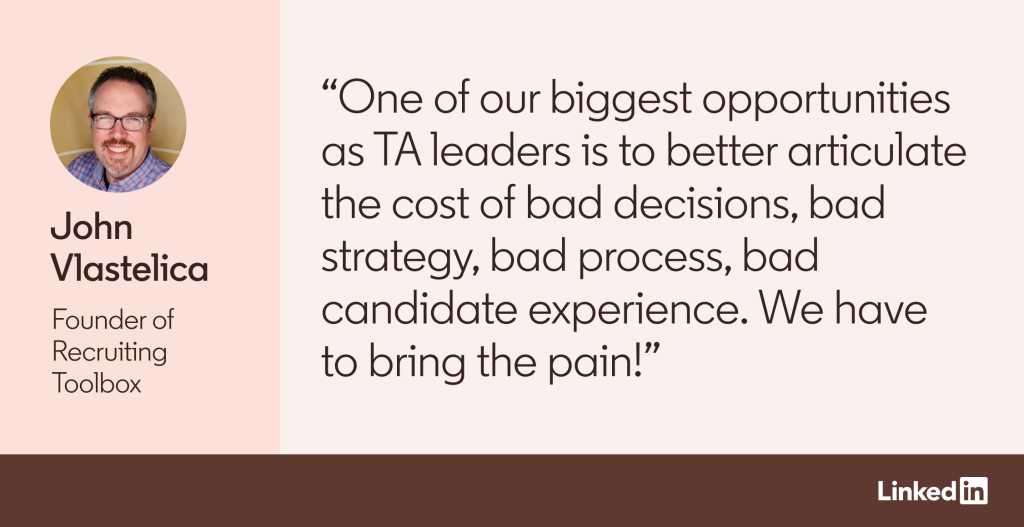Over the last 20 years, I’ve hosted seven interns in my work as a trade show exhibit salesperson. With one exception, I have paid all of their expenses and structured the internship program myself. Why? Because I wished someone had done the same for me when I was young.
After graduating from college, I had none of the resources, foundation, or contacts I needed to get a high-powered job. So, when someone offered me a job as a secretary, I grabbed it. I eventually got promoted to sales, and I’ve been working in sales for more than 30 years.
About 20 years ago, my niece was graduating from high school and had zero skills. She hadn’t even worked as a babysitter. She didn’t know what she wanted to do after she finished her education. So I suggested she and her friend be my summer interns. I called them my Kimterns, and I’ve continued that basic setup with five other Kimterns since then. I’ve introduced them to a wide variety of people in many lines of work and given them a taste (sometimes, their first) of the working world.
A lot of companies are scaling back on their internship programs now, and I think that’s a miss, especially in my industry — trade show exhibits and experiential marketing — where the average salesperson is over 50 and there are no academic courses from which to learn the business. We need the next generation coming in.
I know it’s a big ask for companies to train young people. But internships create a pipeline of talent and help us understand how younger generations think and act (which helps when you’re selling to these generations too). And it’s not that hard to host an internship. I’ve structured the Kimternships on my own, and here’s what I’ve learned:
1. Vet your interns carefully
Like many people, I work remotely, which means my interns and I are in tight quarters. I’ve found my interns mostly through friends, so I have some idea of who they are before they start working with me. But I still vet interns carefully to make sure they have the skills, both hard and soft, that I need.
The Kimternships last from one week to two months — depending on someone’s availability — and with any internship, you want to match an intern’s skills to the kind of company you have. If your company is a little quirky, it’s OK if your intern is a little quirky too. If your business is more analytical, look for that. I’m in sales, so social skills are very important.
I look for: How do prospective interns communicate? Do they look you in the eye? Are they on time? Do they send a thank-you note after you meet with them?
I learned the hard way that I needed to be careful about social skills. One of my early interns was at a meeting with me — I had cleared it with the customer beforehand — and I was presenting designs for an exhibit. I asked the customer, “Which do you prefer?” And my intern offered her opinion before the customer, saying, “I like this one better!”
I gently let my intern know that she needed to let the customer decide. She was one of the younger interns I had, and she also stuck gum under the table when we had a meeting at a billion dollar company. Thankfully, the event manager at that company was a friend of mine. Now, I try to make sure the Kimterns are a little older, and have at least one year of college under their belt.
2. Introduce interns to a wide network of people in a variety of fields
Because I’m in sales, I have a huge network and I like people. So, I try to expose my Kimterns to as many people as possible while they’re working for me. My intern this summer, Lucía González Meyer — a college senior from Madrid, Spain — met 75 people in three weeks.
I brought Lucía with me on a business trip to Chicago, where she met people who worked in graphics, 3D design, strategy, accounting, and estimating. We also met with a customer who makes prostate drugs. She had to sit through a whole meeting listening to talk of very intimate medical procedures. But she took notes and followed the whole conversation.
Another Kimtern, Anna Lee — who was from Germany — was interested in HR, so I worked my connections to find a head of HR. Once we sat down with the HR exec, Anna asked her about her work. Going in, Anna had thought that HR was all about giving people phenomenal jobs and lavishing them with big salaries and wonderful perks. The executive explained that the job is also about performance improvement plans and headcount reductions. By the time we walked out of the meeting, Anna realized that this was not the right field for her. But she wouldn’t have known that if she had not had that conversation.
3. Nurture your interns’ curiosity
One thing I really value in people — and look for with my Kimterns — is curiosity. To encourage this trait, I give my interns two questions to ask everyone we meet:
1. What path took you to the career you have today?
2. What piece of advice would you give to someone at my stage of life?
My interns have received all sorts of answers to the first question but the main takeaway is that no one has a linear career path. Not one single person. And they’ve gotten a lot of fun answers to the second, such as:
- Never get drunk at a company function (Lucía received this wisdom from three different people!).
- Don’t worry so much. Things always work out one way or another.
- Nobody — and I mean nobody — knows what they want to do when they graduate from college.
4. Give them real work to do, even if it’s “intern work”
In addition to having the Kimterns shadow me, I also give them work to do — work I really need done. Lucía, for example, helped me switch databases. My company was moving its database to Salesforce, and I had 952 names that needed to be vetted to see if people were still in the same jobs. So, Lucía looked up all 952 names on LinkedIn. She complained, “This is such intern work!” But her work really helped me.
I also hosted an event this summer for 14 customers at a flower farm in Santa Rosa, California, and Lucía helped me with the social media. We wrote up a post about the event, scrubbed it on ChatGPT and Gemini, and compared the two versions to see which one was better — I didn’t want it to sound too salesy. And then everybody posted pictures from the event on a Google site Lucía created. Lucía is a digital native. She set up the site in about a minute. It would have taken me five hours. Plus, everyone at the event encouraged her to connect to them on LinkedIn. She didn’t have her own LinkedIn profile when she started with me; now she does, with 29 contacts!
Final thoughts: Employers benefit just as much as interns
While it might seem like a lot of work hosting interns, I’m pretty sure I get as much — or more — out of the experience than the Kimterns. I get to reflect on my own career when I’m in this mentoring/coaching position in a way that I might not without my interns. I learn about my customers, vendors, and prospects from a different point of view when they engage with my intern: how they show up, their values, their life lessons. I also learn what’s important to younger generations, including the social causes they’re passionate about, the trends they’re into, how they engage with the phone versus texting, how they use social media, and other nuances I might not otherwise have known.
I also stay in touch with my interns and am proud of their accomplishments. Dansen Roberts, who interned for me 15 years ago, is now an executive at Hewlett Packard Enterprise. Lily Chappell, who worked for me right after Dansen, is a brand and creative manager at Venmo. And Taylor Gaynor, a New York University student who worked for me the longest, just finished a communications internship at The New York Times.
It’s fun to see the progression from when my interns show up to when they leave and to see how they change. The internships are something I can do that have an impact, and they’re a lot more meaningful to me than writing a check to some organization. When I was at Anna’s wedding last year, her dad sought me out. “Kim,” he said, “that internship Anna did with you absolutely changed her life.”










